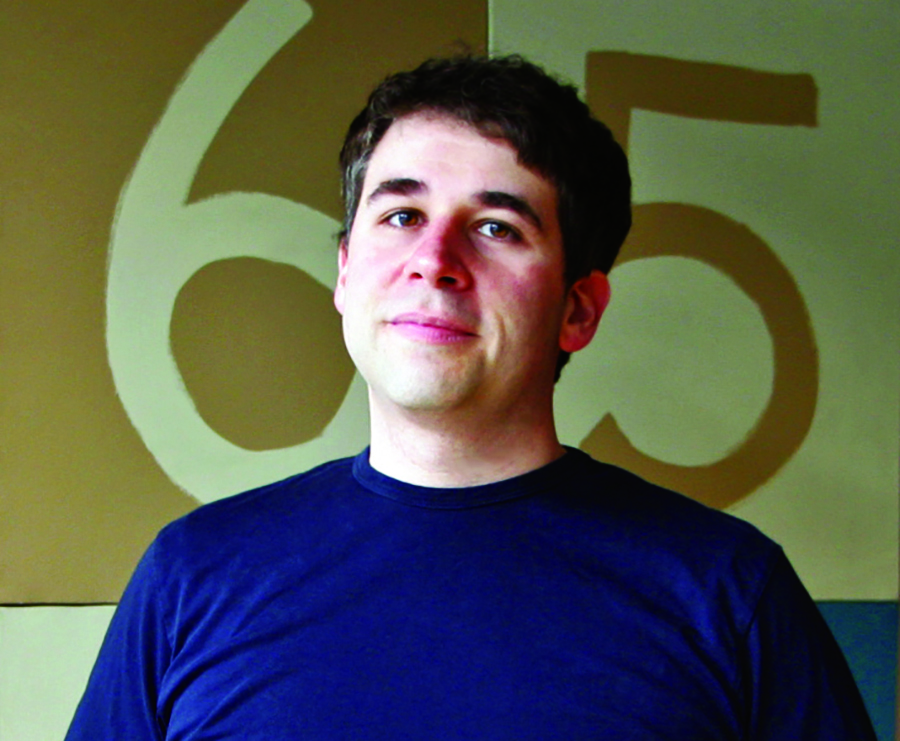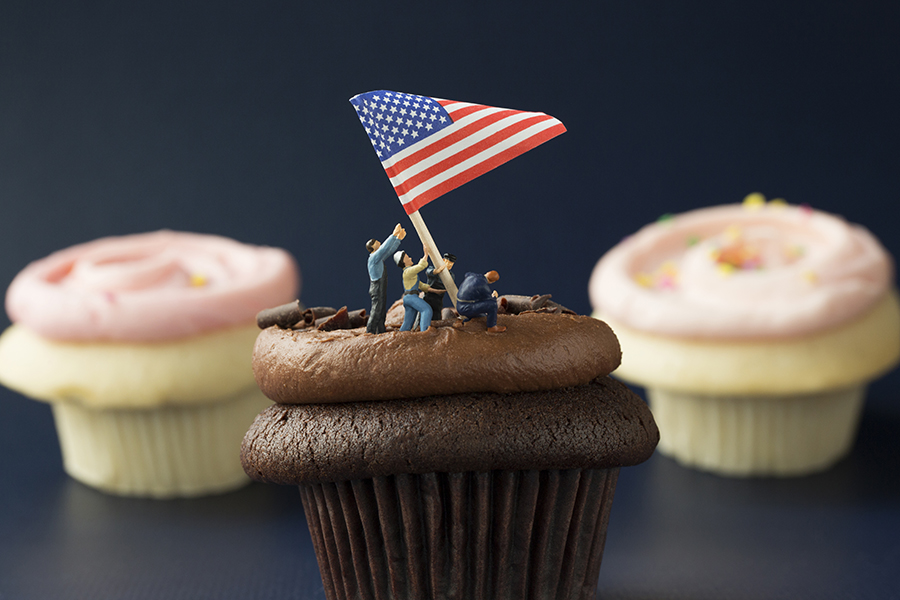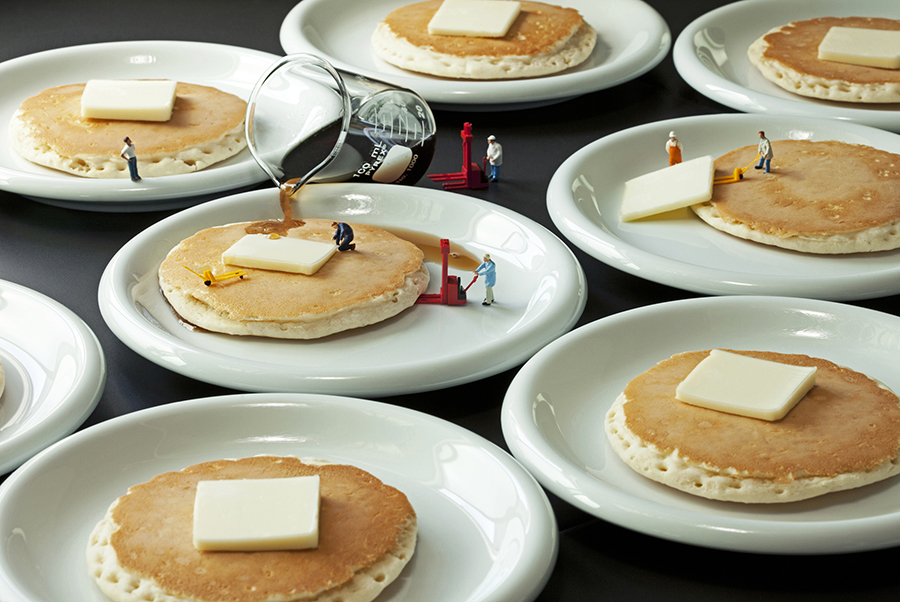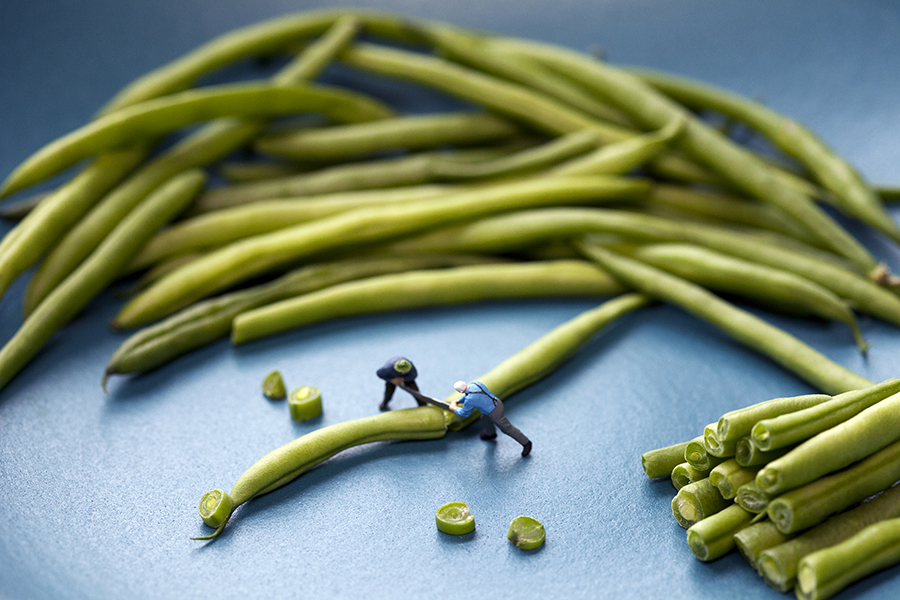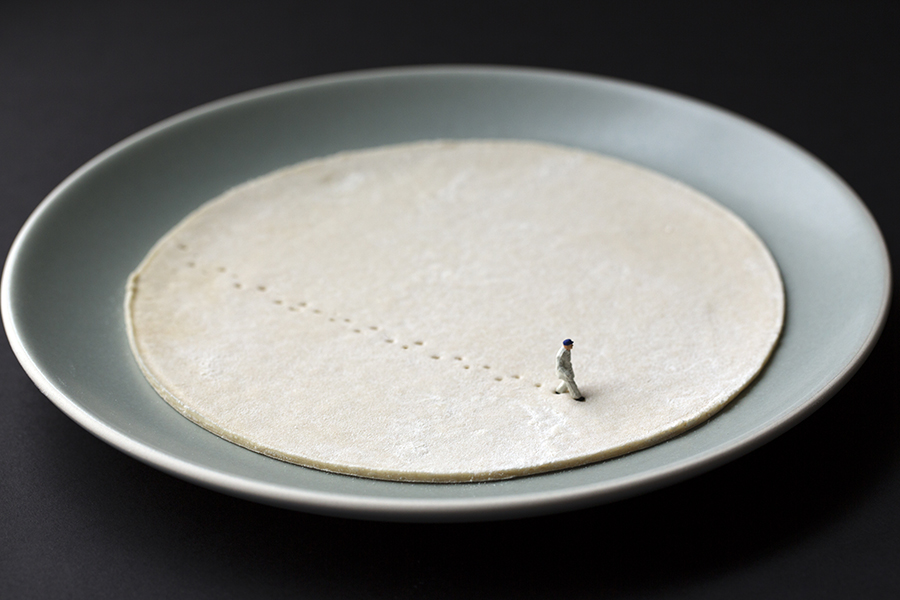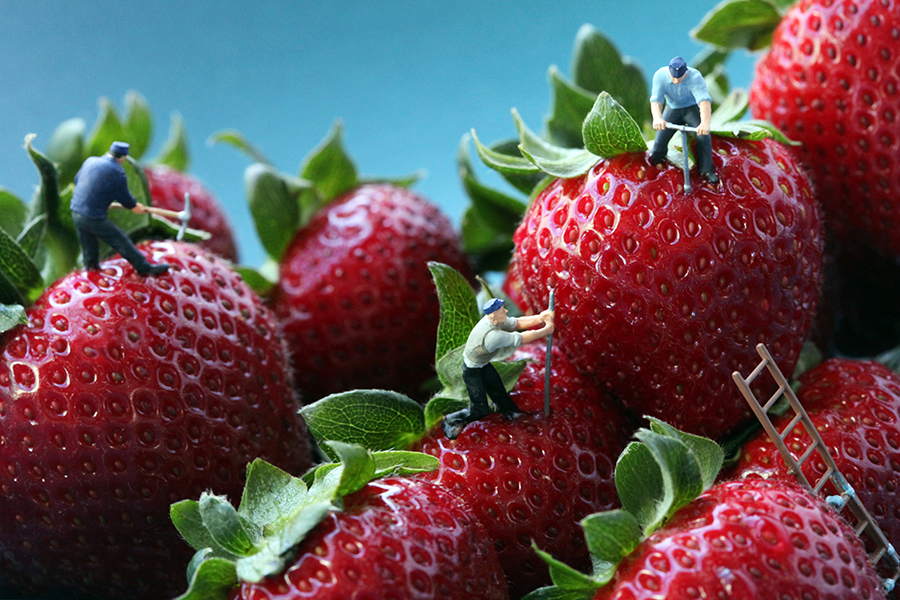Christopher Boffoli is a fine art, commercial and editorial photographer. He began making visual art at an early age but only began exploring the medium of photography in his teens after receiving a camera as a birthday gift.
Largely self-taught, Christopher worked as a student journalist in high school and college, eventually founding his own commercial photography company while he was still an undergraduate. His diverse body of work includes editorial and documentary travel photography. But he is best known for his Big Appetites work which features tiny figures posed against real food landscapes. In addition to his commercial and advertising work for brands large and small, his fine art photographs may be found in galleries and private collections in the United States, Canada, Europe and Asia. He currently lives and works in Seattle.
Can you tell us a little about yourself?
I’m a Seattle, USA based photographer, writer, journalist and filmmaker. I started taking pictures as a hobby when I was a teenager and continued as a student journalist in high school and college. During my last year at university I founded my own commercial photography company. But photography would continue to mostly be just a hobby for me over the course of about a decade as I worked in other fields. After a near-fatal mountaineering accident in 2004 I decided to leave my job to take a couple of years to travel and pursue creative endeavors. I traveled the world and began to sell some images to magazines. Then in 2011 an editor saw some of my Big Appetites photographs – a series I began in 2003 and worked on continuously – and syndicated them in Europe. They went viral and now the work on this series is essentially a full time career. The works has been published in more than 100 countries and fine art photographs from the series can be found in galleries and private collections around the world.
How did you get interested in photography?
When I was about 9 years old my parents went away on a vacation to the South Pacific. My dad went out and bought an SLR before he left and came back with heaps of photos. I grew up in New England where the winters were long. So seeing all of those Ektachrome slides with vivid tropical colors made an impression. When I was about 15 I was given a camera as a gift. And that was at the official beginning of my learn-as-you-go photography education.
Do you artist/photographer inspired your art?
I can’t say that there were any specific artists or photographers that have inspired my work. I have always been a creative person and photography is just one of many creative outlets for me. Though there is no doubt that all of the media I consume (art, photography, cinema, architecture, design, etc.) nourishes my creative spirit in some way.
Could you please tell us anything about your technique and creating process?
My Big Appetites fine art photographs feature tiny figures photographed against real food backgrounds. There is a lot of cheating in commercial food photography so from the start I made a decision that I wanted the food in my images to be real. This can present a bit of a challenge because while food offers beautiful color and texture as a perishable product it can also have a lot of flaws. But I made a creative decision to work with only natural light on the whole series. And where I live in Seattle we have very flat, even light that is really perfect for food photography. I try to work with food that is fresh and in season (to eliminate having to do hours of digital clean-up afterwards). After the food is selected I bring it back to my studio where it is cleaned, cut and styled. I’ll look carefully at the geometry of the food, selecting the best angles. From there it is a matter of determining the context of how my tiny figures will be interacting with the food. This is an iterative process in which changes are made to the composition and often to the figures. When I’m satisfied I’ll usually shoot through a range of f-stops so I’ll have different choices later in the editing process. Sometimes I’m dissatisfied and will go back to reshoot. But most times I manage to find an image that I think is successful.
Describe your ideal photographic situation
I don’t think there is ever an “ideal” situation. Working in the studio on my fine art images is certainly closer to ideal – versus the work I do as a photojournalist– as I obviously have more control of the situation, the light, the temperature, etc. than I do when shooting a rapidly unfolding breaking news story in which you need to compose images among the chaos. But if you consider that some of the best things happen creatively when you are working with the unexpected, I think a photographer should always strive to keep away from “ideal” working situations. Being out of your comfort zone, having to be innovative and being surprised usually creates something more interesting.
How much preparation do you put into taking a photograph?
This can vary according to the type of work I’m doing. If I’m shooting images for a feature story I definitely invest time in doing research. If shooting a breaking news story I have no time to prepare as that is a very dynamic, and rapidly moving situation. With my fine art work I generally approach the composition fresh. Sometimes I will get ideas in advance and will sketch out the composition. Though most times I like to respond to doors of opportunity as they open. I always think of that line from the book Out of Africa that reads: The world was made round on purpose so that we can never see too far ahead over the horizon. That’s not to dismiss the professional focus that I bring to my work and the way that nearly three decades behind the camera has prepared me for that next click of the shutter. But one should also relish the happy accident.
What’s your useable-to-unusable ratio when you review images from a shoot?
An interesting question that I’d be curious to know about other photographers, but really difficult for me to quantify as it is not a number that I ever track (especially in a digital world where it costs me the same to shoot 20 frames as it does 2000). If I’m shooting while traveling I might shoot 700 frames in an average day (with two cameras: one wide and one telephoto). From that I’d be happy to get 50-70 frames that are keepers. As a journalist I might shoot 100 frames and send my editors 5-8. Shooting fine art it sometimes can take as few as 20 frames or as many as 100 to get the image I’m looking for. So widely variable.
What quick advice do you have for someone who wants to improve his or her photography skills?
I’m sure you’ve heard theold axiom that there’s no such thing as a stupid question. However there certainly are wrong questions. Young photographers contact me all the time asking me A. what kind of gear I shoot with and B. how I was able to gain notoriety for my work and how they can become famous. I always remind them that equipment brands don’t matter and than no piece of gear I have is ever as important than the subject standing at the end of my lens. In fact, sometimes having less gear requires you to be more clever and innovative in getting a shot. And in regard to notoriety, a photographer’s focus should always be making good images, not on becoming famous. What really made the difference for me was that, despite taking many thousands of bad pictures in the beginning, I didn’t get discouraged and I didn’t stop. Every time you hit that shutter button you’re becoming a more experienced photographer.
I also think you should try to be as diverse as possible with your photography. Make an effort to get out of your comfort zone. Stay away from the cliches (like photographing too many pets, flowers, sunsets, insects and hot air balloons, etc. ). Get yourself a good collapsible reflector and learn how to make great portraits so you can document the people in your world with the natural light in which they exist. Lastly, avoid wide angle lenses as much as possible. They can produce a field of view that is wonderfully dramatic but they’re also the lenses that are easiest to screw up with. Get yourself a good prime 35mm or 50mm lens instead and stick with it. You’ll get much better results. Other than that, avoid using a flash as much as possible and never shoot in the harsh light in the middle of the day. Morning and afternoon light are best.
From time to time many photographers find themselves in a creative rut or uninspired to shoot. Does this ever happen to you and if so how do you overcome these phases?
I can’t really say that I ever have uninspired periods. More often my problem is that I simply don’t have the time to accomplish everything I want to do creatively. With that said, creativity works different for everyone and you can’t turn it on and off like a faucet. If your photography isn’t happening, then I’d recommend trying to be creative in another way. Writing, drawing, playing music, cooking, chainsaw ice sculpting…whatever that might be. You can also spend time feeding your creative engine going to local museums, art shows seeing movies. Though it is important to be mindful of what you’re looking at and not just passively consuming content. Finally, it is also important to have balance and to be able to rest your mind and relax so that you can be open to new ideas and new inspirations. The reason why so many of us think of good ideas in the shower is that it is a time when – bathed in hot water with our eyes closed – we’re more relaxed and our minds are more clear. As much as we’re driven to constantly record what we’re seeing with our cameras there is value in sometimes putting the camera aside and having experiences with both eyes open as opposed to always looking through the viewfinder.
What future plans do you have? What projects would you like to accomplish?
Again, I feel more comfortable being poised to respond to doors of opportunity as they open instead of trying to divine a future road map. I’m in the very fortunate position to be receiving a steady stream of editorial and commercial commissions which are keeping me busy and my calendar full. My Big Appetites work is continuing to sell well through my galleries so part of my focus will no doubt continue to be on fulfilling orders for fine art collectors. After the holidays I’m looking forward to beginning work on an entirely new body of work. [Official Website][dodho magazine]



